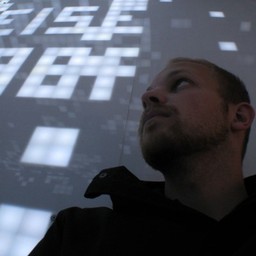-
- 16 JulKas Oosterhuis will lecture at Canadian Centre for Architecture [CCA] in Montreal, Canada
- 08 JulKas Oosterhuis will lecture at ALIVE 2013 event at the ETH Zurich (copy 1)
- 27 AprKas Oosterhuis speaker at Building Dynamics Symposium in Calgary
- 22 AprDr. -Ing. Henriette Bier lectures at the Ethiopian institute of Architecture, Building Construction and City Development
- 05 MarAlireza Mahdizadeh and Dr. Nimish Biloria publish in the International Journal of Virtual and Personal Learning Environments
- 22 Feb Hyperbody. First Decade of Interactive Architecture in The Best Dutch Book Designs 2012
- 01 FebThesis defence: "Towards a methodology for complex adaptive interactive architecture"
- 21 NovRob|Arch 2012 - Conference Robot Workshop Rotterdam @ Hyperbody’s robotics lab
- 19 NovArticle "Interactive morphologies" by Nimish Biloria published in Frontiers of Architectural Research
- 19 NovJournal article "Simply complex, toward a new kind of building" by Kas Oosterhuis in FOAR
-
-

- Tomasz Jaskiewicz
Lasse Gerrits: Thinking in terms of complexity has the advantage of focusing on the time-dimension. 'Complexity' puts everything one observes into flux and that is really an added analytical value. But why would this be relevant to architecture? Isn't architecture static by definition?
The talk between Lasse and Tomasz is hosted on the Cityness blog. Source: interview part1 / part2
A while ago I blogged about an event where among others Tomasz Jaskiewicz of TU Delft / Hyberbody talked about complexity-informed architecture. I left with quite some questions and contacted Tomasz for more information. He was kind enough to get into detailed answers and accepted to have the discussion published on Cityness.
What are your most important cues from complexity?I understand that. I mean, once you get start seeing the world as temporal systems, it is pretty hard to return to statics. So, which authors in the realm of complexity do you consider important? I enjoyed the examples you showed during your presentation and I can follow the reasoning behind them, tracing it back to complexity thinking. However, I find it hard to transfer your examples to concrete building projects. How does complexity translate into buildings where people can live, work or recreate and that are compliant to building regulations, and can be build at realistic price levels?The Responsive CitySo do I. The proof of the pudding is in the eating, and that is especially true for complexity theorists. In my field, thinking in terms of complexity has received a lot of criticism. Some say it is a fad, full of fancy terms but with little added value. How is that in architecture?
 Facebook/
Facebook/
 Twitter/
Twitter/
 RSS
RSS

